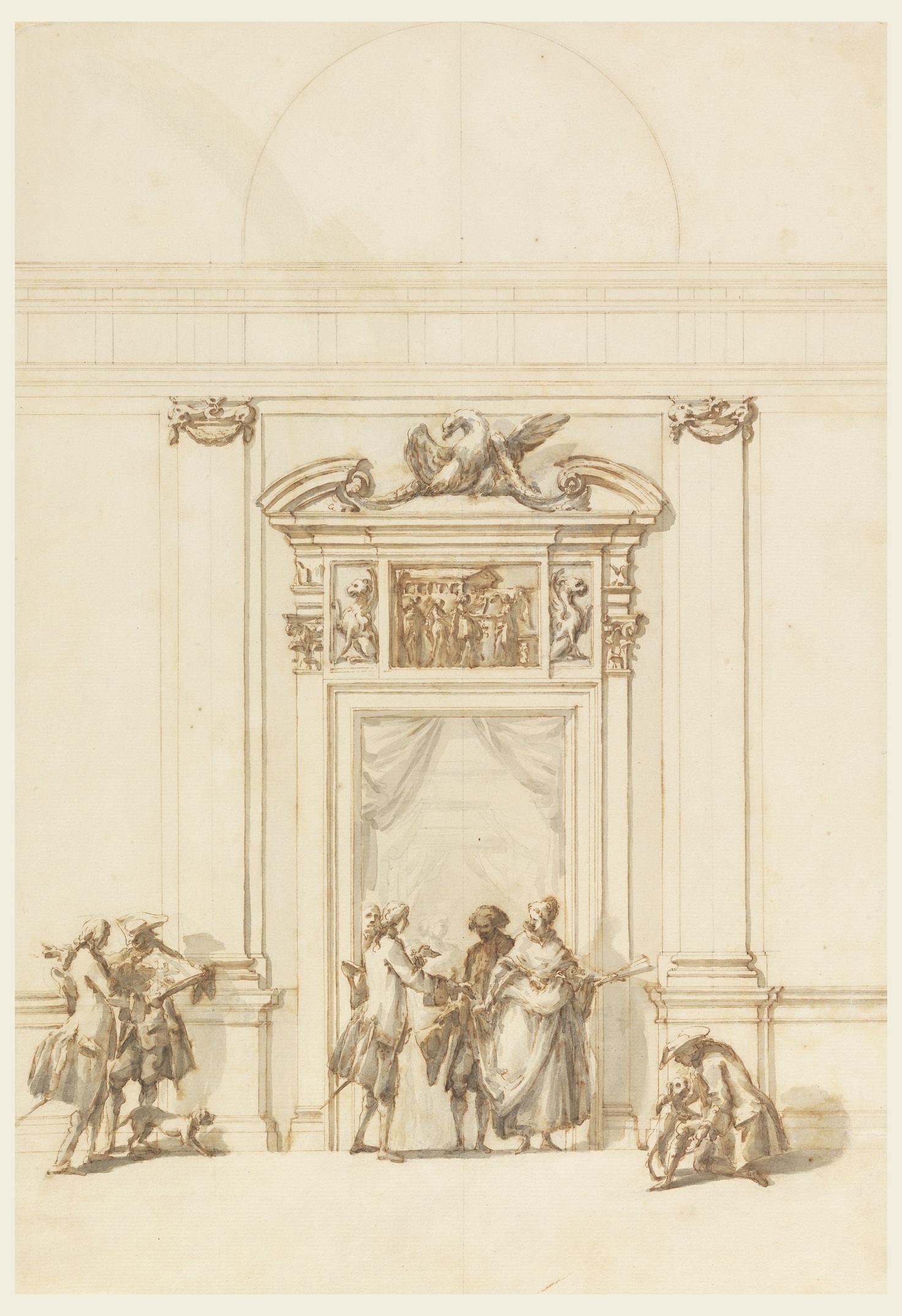Faculty Spotlight: Tracy Ehrlich of HDCS Embarks on Smithsonian Fellowship
Posted on September 15, 2016 | posted by: adht
Drawing, Design for a Doorway in the Villa Albani, Rome, 1755-1756; Designed by Carlo Marchionni (Italian, 1702-1786); Pen and brown ink, brush with brown and grey wash, graphite on cream laid paper; 16 7/16 x 11 3/8 in. (417 x 289mm); Museum purchase through gift of various donors, 1901-39-2178; Cooper Hewitt, Smithsonian Museum; Matt Flynn © Smithsonian Institution.
MA in the History of Design and Curatorial Studies faculty member Tracy Ehrlich has been awarded a Smithsonian Institution Senior fellowship for the 2016-17 academic year.
The fellowship supports a book project titled, “Carlo Marchionni’s Eloquent Figures: Redefining the Early Modern Architectural Drawing.” This project explores a set of eighteenth-century architectural drawings owned by the Cooper Hewitt, Smithsonian Design Museum, which jointly runs the MA program in the History of Design and Curatorial Studies with Parsons School of Design.
Professor Ehrlich has recently spoken about this project at the Society of Architectural Historians annual conference in Pasadena (2016). She will give another talk on the subject at the College Art Association in February of 2017. She also has an essay on the topic forthcoming in 2017.
Tracy Ehrlich brings her background in seventeenth-century Italian architectural and landscape history to the Marchionni project. Her first book focused on the architecture and landscape of a papal villa near Rome and the cluster of aristocratic villas that developed on the same hillside.
“This new project is exciting,” remarks Ehrlich, “because it has brought me into new realms, into the eighteenth century, and into the world of drawing. I am very happy to be funded by the Smithsonian and to learn more about our ‘host’ institution by spending a year in the department of Drawings & Prints, where the items I am studying are located.”
An excerpt from Professor Ehrlich’s talk at the Society of Architectural Historians, titled “The Galleria of the Villa Albani as Performative Space,” gives a peek into the fascinating work that is underway as a part of the project:
My paper seeks to unravel the narrative component of Carlo Marchionni’s architectural visions. His elegant gesticulating figures have much to say. The interplay between moving, gesturing people, classical artifacts, art and architecture in Marchionni’s Albani drawings suggest an active production of experience rather than a transparent reflection of the world. I will argue that Marchionni’s interior elevations invited the audience to engage with the viewing practices of eighteenth-century Rome, the cultural practice of connoisseurship, and the social practice of conversazione. In the drawings these practices are suggested – even explicitly performed. In the learned hands of the patron, drawings could be used to orchestrate the participation of viewers and enact the social and cultural meanings of the villa.

